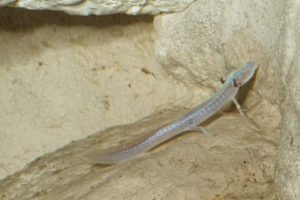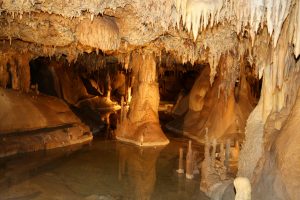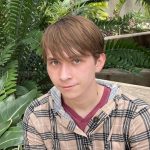When one thinks of an oasis, what typically comes to mind is an above-ground watering hole teeming with life and natural resources that can support a vast ecosystem, juxtaposed against a barren landscape devoid of that which all living things need to survive – water. While critics of San Antonio may call it a desert, the city’s most important oasis lies not on its barren earth, but deep below in the porous limestone of the Edward’s Aquifer, which many different uniquely adapted species call home. One such species is the endangered 1 Texas Blind Salamander, which despite it’s small size and dwindling population, succeeded in making major waves that still presently impact how the city manages its water .


In 1993, the collective prayers of the Sierra Club were answered, and the U.S. District Court ruled in favor of the lawsuit, announcing that the Texas Water Commission had to develop more effective pumping regulations to maintain spring flow. In response to this, the Texas Senate established the Edward’s Aquifer Authority (EAA) in 1993, abolishing the Edward’s Underground Water District and overhauling the previous Water Boards to create the current San Antonio Water System, both with the new goal of recognizing aquifer conservation as a priority. Three years later in 1996, the EAA became fully operational and is able to begin rolling out new protocols and regulations aimed at minimizing pumping through fines and preservation of recharge zones 9. The new precedents include increased monitoring of water usage by citizens and businesses, placing limits on the amount of water that can be pumped to customers of the Edward’s Aquifer Authority in times of drought, and established the protection of recharge zone areas that are were previously at risk of destruction. Aquifer levels would be monitored through the established J-17 index well at Fort Sam Houston, but now drought restrictions would be put into place based on decreasing water level readings. These systems are still in place today, and have targeted the most immediate threats to water conservation and sustainability in the face of expanding urbanization.
For the humble salamanders, these regulations have staved off extinction and protected valuable recharge zones essential to the stability of their habitat. Although they are still currently endangered, the EAA protections are currently helping the ecosystems of the aquifer continue to thrive, and are ensuring that the residents who rely on this resource will have enough for the future 10. In 2021, a study by the University of Texas at San Antonio sought to evaluate the success of these conservation regulations in protecting recharge zones, using urbanization rates as the measurable variable representing human consumption. The study measured development rates from three periods: 2001–2006, 2006–2011, and 2011–2016. Researchers found that the rate of urbanization decreased during all three time periods, perhaps indicating a new era of aquifer protection as a result of increased recharge zone regulation by the EAA 11. Through no actions aside from their mere existence, these little known organisms were able to accomplish more in the way of establishing precedents for aquifer conservation in five years than resulted during previous decades of aquifer use. Surprisingly, San Antonio’s continued access to water from the Edwards Aquifer San Antonio has the Blind Texas Salamander to thank.
- Texas Parks and Wildlife Service. “Texas Blind Salamander (Eurycea Rathbuni).” RSS, https://tpwd.texas.gov/huntwild/wild/species/blindsal/ ↵
- Gratwicke, Brian. “Texas Blind Salamander.” Flickr.com, 4 Aug. 2014, https://www.flickr.com/photos/briangratwicke/9477687563 ↵
- “Texas blind salamander”, Edwards Aquifer Authority, 2021 Aug 2, https://doi.org/10.1130/2019.1215(27) ↵
- Wikimedia Commons, Oct. 2003, https://commons.wikimedia.org/wiki/File:Edwards-Trinity_aquifer_system_v1.svg. Accessed 14 Sept. 2022 ↵
- “Water Waste – Report It.” San Antonio Water System, April 3, 2020. https://www.saws.org/conservation/water-waste/ ↵
- John M. Sharp, Jr, Jay Banner, “The Edwards Aquifer: A Resource in Conflict”, Edwards Aquifer Authority, Department of Geological Sciences, University of Texas, Austin, August 1997, https://www.edwardsaquifer.org/wp-content/uploads/2019/02/1997_SharpBanner_EdwardsAquifer.pdf ↵
- Miller S. Aquifer_innser_space_cavern_6d2106. Flickr. 2015 May 17, https://www.flickr.com/photos/smiller999/17568317090 ↵
- “EAA Timeline”, Edwards Aquifer Authority, 2022 Jun 23, https://www.edwardsaquifer.org/eaa/history/eaa-timeline/ ↵
- “Wastewater Discharge Regulations and Impacts on Surface Waters and Edwards Aquifer Recharge in the Texas Hill Country – Aquifer Alliance”, Greater Edward’s Aquifer Alliance, 2017, https://aquiferalliance.org/wp-content/uploads/2018/07/NoDischargeBill-FactSheet.pdf ↵
- Milady Nazir, “Study Highlights How Edwards Aquifer Protection Has Staved off Water Scarcity”, UTSA, University of Texas at San Antonio, July 8, 2021, https://www.utsa.edu/today/2021/07/story/study-highlights-edwards-aquifer-protection.html ↵
- Fabio Guerra, Justin, and Neil Debbage. “Changes in Urban Land Use throughout the Edwards Aquifer: A Comparative Analysis of Austin, San Antonio, and the Interstate–35 Corridor.” Applied Geography. Pergamon, June 21, 2021, https://www.sciencedirect.com/science/article/abs/pii/S0143622821000965?via%3Dihub ↵




6 comments
Marissa Rendon
Excellent article! Not only was this article informational and enjoyable to read, it was a well structured article. The species that was affected by this was so interesting and cool to read about. I found it so interesting that this species had dots for eyes and was just blind, I can not imagine how that must feel. And how scary it probably is to see up close.
Jared Sherer
Learning about the Texas Blind Salamander was very interesting. The author did a good job with his detail in work and shows good evidence of using research in his article. The species that are affected by this is eye opening and very interesting to learn about. To know that a small species in this informative article can have a pretty big impact on the aquifer’s ecosystem should have more of a spotlight in our society. The author developed a well written article and hope that others that experience this read learn a lot from it as well.
Eugenio Gonzalez
The article was very informative. Before reading the article, I did not know that such specie as the Texas Blind Salamander existed. It was interesting to see how much land the Edwards-Trinity aquifer covers. The importance of the topic and the material covered in the article should be encouraged as it sends a clear message that, as humans, we must not be excessive with water and protect the lives of species such as the Texas Blind Salamander.
Abbey Stiffler
I had never heard of the Texas Blind Salamander before reading your article. Based on the animal’s anatomy, I cannot imagine having dots for eyes and being unable to see. I am surprised I have not heard about this situation before the article as it seems like if the Sierra Club did not defend the salamander the aquifer would not be as useful as it is now.
Karly West
You would never think that such a small creature could have a huge impact on our aquifer’s ecosystem. It’s incredible that this salamander isn’t talked about more or recognized for its role in the environment. I’m glad that the aquifer is prospering because of the protection of one endangered salamander that the Sierra Club decided to defend. Without them, The Texas Blind Salamander may not have been around for future generations to appreciate. Great article, I really enjoyed reading!
Ana Diaz
This was a very interesting article to read, I did not even know of the Texas Blind Salamander’s existence. It is incredible how the protection of one little creature could help set a precedent for how an entire aquifer is being conserved. I am very happy that the Sierra Club recognized the importance of the Edward’s regulation and decided to hold federal organizations accountable while also protecting the habitat of many other species. Good work, Byron!